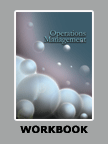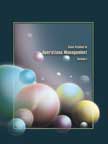Waiting Line Management at Tirumala, Large Pilgrimage Centre in India
|
|
ICMR HOME | Case Studies Collection
Case Details:
Case Code : OPER104
Case Length : 13 Pages
Period : 2002-2012
Organization : Tirumala Tirupathi
Pub Date : 2012
Teaching Note :Available
Countries : India
Industry : Power
To download Waiting Line Management at Tirumala, Large Pilgrimage Centre in India case study
(Case Code: OPER104) click on the button below , and select the case from the list of available cases:

Price:
For delivery in electronic format: Rs. 400;
For delivery through courier (within India): Rs. 400 +Shipping & Handling Charges extra
OR

Buy Now
|
» Operations Case Studies
» Operations Short Case Studies
» View Detailed Pricing Info
» How To Order This Case
» Business Case Studies
» Case Studies by Area
» Case Studies by Industry
» Case Studies by Company
Please note:
This case study was compiled from published sources, and is intended to be used as a basis for class discussion. It is not intended to illustrate either effective or ineffective handling of a management situation. Nor is it a primary information source.
Chat with us

Please leave your feedback

|
|




<< Previous
Pilgrimage to Tirumala
|
Pilgrims from all over the country arrived at the temple town through different modes of transport such as rail, road (either public or private), or air. Usually, the pilgrims reached the foothills known as Tirupati. The distance between Tirupati and Tirumala was 19 Km. From Tirupati, some pilgrims went directly to Tirumala, while others spent a few hours sight-seeing and visiting other temples and religious locations in and around Tirupati.People who had personal/private transport could go to Tirumala in their vehicles. Others could take the Andhra Pradesh State Road Transport Corporation (APSRTC) buses. APSRTC operated regular services between Tirumala and Tirupati with a frequency of just two minutes. The round trip took about two hours including the waiting time at both the boarding points.
|

|
The buses had a capacity of 50. With 20 hours of operation a day and 8 round trips in a day buses could transport 400 pilgrims. With a fleet size of 100, the buses could bring about 40,000 pilgrims a day. However, it's possible to include more buses to the fleet based on actual rush of pilgrims. Since the journey time is short and there is a dedicated roadway, (there are two separate roads for up and down traffic), there are no major obstacles to doing this.
After reaching Tirumala, the pilgrims could find suitable accommodation where they could refresh themselves. TTD maintained more than 5000 cottages for the convenience of pilgrims. Some pilgrims then went for a tonsure. TTD maintained a tonsure facility10 with a capacity of 15,000 tonsures per day with 500 barbers who operated on a three-shift basis as of 2012. After their tonsure, pilgrims could go for a bath either in the holy tank in the middle of Tirumala or at the facility arranged by TTD and then join the queue for darshan. Some pilgrims on arrival at Tirumala directly went to the darshan queue and after the darshan, visited the tonsure center, took a bath in the holy tank, and then left Tirumala.
After the darshan, the pilgrims usually donated money at the Hundi, the equivalent of a donation box, placed inside as well as outside the temple, and then left the temple premises. Earlier, there was a queue11 for the pilgrims to buy laddus, which was again a FIFO model. To bridge the demand and supply gap, the TTD had started rationing and restricting the number of laddus a pilgrim could buy.
After receiving their laddu(s) and a free meal, the pilgrims could come back to their cottages or wait for transport to go down to Tirupati and subsequently to their place of residence.
Excerpts
- Next Page>>
|
|









